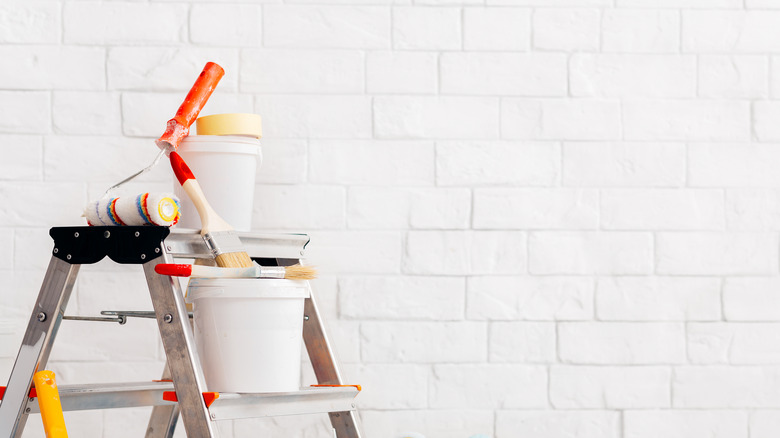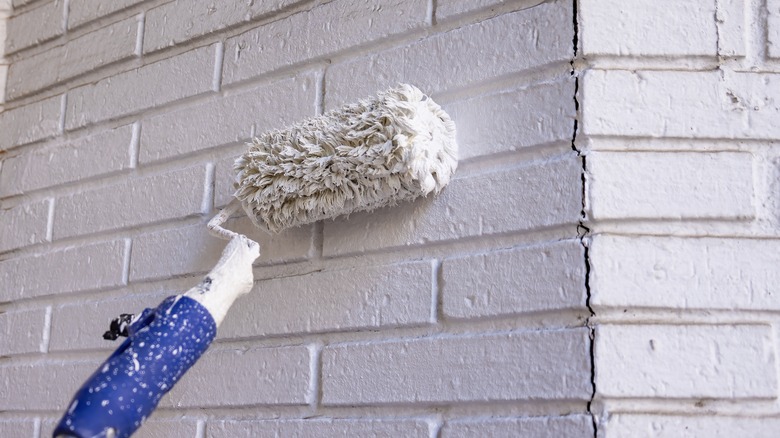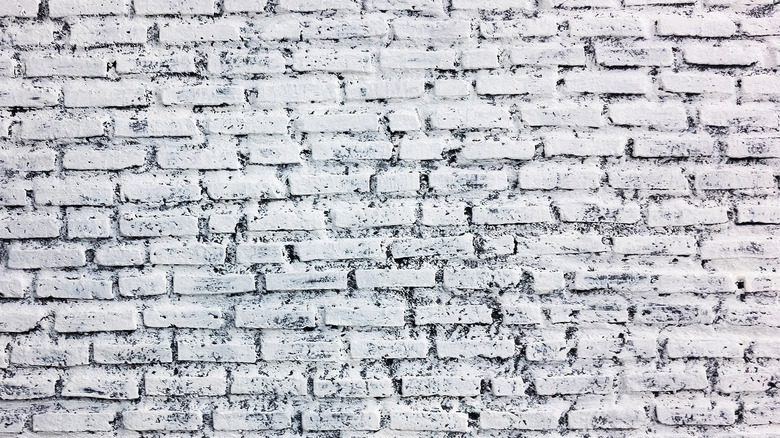The Best Types Of Paint To Use On Exterior Brick
When you have brick on an exterior retaining wall or around the outside of your home, you may tire of the look after a while. Rather than undertaking the expense of tearing down the brick and replacing it with another material, consider revitalizing it with a coat of paint. You can modernize and brighten the look of a brick exterior with paint. However, for the outcome that you want to see, you need to paint the brick the right way. Mistakes can leave you unable to create the design you want. The first thing you need to do before tackling this job is select the correct type of paint, which can be acrylic latex exterior or elastodynamic made specifically for use on masonry. Some people even choose to use limewash for a worn and vintage look.
Making use of paint that is specifically formulated for masonry is especially important in this type of job. Because bricks consist of porous materials, the masonry paint allows air to continue to move into the porous areas without trapping water and moisture. During freeze and thaw cycles, trapped pockets of water and moisture could eventually lead to damage to the material.
Additionally, for satisfactory results if you choose to do this as a DIY project, you must prepare the area by washing it thoroughly before using your roller or sprayer. Because of the texture found with a brick layout, it often collects dust and other debris that could interfere with adherence.
Benefits of using elastodynamic paint on a brick wall
Because elastodynamic paint, also called elastomeric paint, has a high level of elasticity, it works well for brick by naturally filling in the cracks and slight texture variations. It's also a good choice for outdoor use, as variable weather conditions do not affect it negatively, including when it has exposure to high humidity or significant rain.
It works perfectly for this case, as its formula specifically focuses on protecting masonry by creating a watertight covering for the brick. Furthermore, it can stretch as humidity and temperature conditions change before retaking its natural shape when the environmental conditions return to normal. This flexibility ensures that it will not trap moisture in the crevices of the brick's texture, which could result in damage from freeze and thaw cycles. Elastodynamic paint has a long-lasting formula that can give you about a decade of performance before needing a new coat. It has such a high level of durability because it can be up to 10 times thicker than other types of paint when it dries.
You may want to look elsewhere for a type of paint to use on brick if you are on a tight budget, though. Elastodynamic paint's cost can be about 50% higher than other options. Additionally, the application can be challenging as it often requires you to back-roll each coat if you are using a sprayer. The sprayer alone simply can't guarantee full coverage without using a roller, too.
When you should use acrylic latex or limewash for exterior brick
Another option beyond elastodynamic paint is to go with a limewash or an acrylic latex made for exterior brick surfaces. Acrylic latex is a popular choice because it carries a reasonable price. Its properties ensure that any moisture left inside the porous brick material will evaporate quickly, reducing the chance of damage from repeated freeze and thaw cycles. This type of paint is easy to apply, as it doesn't require multiple coats to achieve the desired results. It's also highly durable. One downside to using acrylic latex is that it may show accumulated dirt and mildew more than other painting materials.
Another option is to apply limewash, which is a watered-down paint that creates a washed-out, vintage look on the brick. In fact, people have used limewash for centuries over the top of brick. It consists of crushed limestone, natural pigments, and water. It almost has a chalky look before you apply it, as it primarily appears in white and off-white colors. When applied to brick, it creates a distressed look that can be ideal for certain home designs. Because limewash consists of natural materials, some people prefer to use it on the exterior of a building versus other options that may have less environmentally friendly ingredients and materials. However, it can be difficult to apply limewash correctly, so you may have to hire a contractor to perform the application, driving up the cost.


